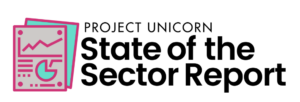Data Interoperability in K-12 (I Promise This Isn’t Boring)

By Jami O’Toole
By virtue of the fact that you clicked on this blog, it is safe to assume you are either a true data geek or your job responsibilities entail trying to get disconnected data systems to talk to one another.
Data interoperability isn’t a click-bait topic, nor does it make for great headlines. But it is a foundational building block that opens the doors of innovation, and allows people to focus on what matters most: in our case, student learning.
So, what do I mean when I say data interoperability? Data interoperability is the seamless, secure and controlled exchange of data between applications.
I’ll illustrate with an example that we all take for granted. How frustrated would you be if you had to enter the contact information for your friends, family and co-workers into your personal email directory, your work email directory, your phone, your calendar application, LinkedIn, Facebook, etc?
You’d be annoyed. But thanks to tech magic, you can enter your contacts once in your address book and click a button to magically transport your contacts to countless applications or to your new device that is replacing the one that met an untimely demise. That’s data interoperability… just like magic.
Education Data Is Not Where It Should Be. Yet.
Unfortunately, the state of data interoperability in K-12 lags behind most industries. If you are a teacher in a classroom or the IT director in a school district, you cope with data interoperability problems and have become resigned that these inconveniences are the norm.
The teacher in the classroom goes home after an already long day to a pile of ungraded quizzes and the task of planning tomorrow’s lessons. The quiz she gave is assessing a topic that was also included in the recent benchmark exam. To plan for tomorrow, she needs to know if her students’ performance improved from the benchmark to the quiz. Cue the mega spreadsheet that lays out all the assessment results by learning standard for each student. The teacher now spends the evening not only entering the quiz information into the district’s gradebook but also typing it into her spreadsheet and trying to make sense of it.
That’s what a data interoperability failure looks like in the classroom. The state of the K-12 server room is even more precarious as you unearth a complicated patchwork of csv files, CD-ROMs (yep, they still exist), emailed Excel/Google sheets, and custom scripts behind all the reports that district and school administrators rely upon to keep the daily operations going. Challenging on many levels.

Giving Teachers Data At Their Fingertips
At the Michael & Susan Dell Foundation, we believe that educators need access to a range of information about students and their performance to deliver the best instruction possible for every student.
As the number of education technology tools used in the classroom grows, it becomes increasingly difficult and cost prohibitive to make sense of the information these tools are meant to provide to educators. Why? Some reasons we’ve found are (1) that data is often locked up in a siloed source system, (2) data that should be the same across applications isn’t, and (3) the data requires significant formatting and massaging before it can give educators the ability to make actionable decisions within their classrooms.
We believe solving the data interoperability challenges facing districts and schools is critical to giving teachers the information they need to do their jobs and to enable innovation in their classroom practices.
But how do the efforts we fund help solve the data interoperability challenges in our school districts?
- They create and promote a clear definition of data interoperability. People in school districts who procure and support data tools and the vendors who create and sell them must have a common language to discuss requirements and solutions and objectively evaluate their tools capabilities. It is impossible to solve a problem if you can’t define the problem clearly.
- They define the standard for K-12 data exchange. To realize the vision of seamless data transfer, all the tools in the ecosystem need to speak a common language and exchange data in well-defined and predictable ways. Data standards provide the common language and data exchange specifications (e.g. API resource specification or XSD definitions) provide predictable ways to transfer data.
- They empower districts and vendors to put in place strong data security and privacy safeguards. Seamless data transfer is irresponsible and frankly unethical if it isn’t with the right security in place and governed by appropriate data privacy policies. We support organizations that can assist districts and vendors in understanding what good looks like and honestly evaluating their own practices.
Learn More
In this blog series, we will highlight the ways that data interoperability is laying the foundation for innovation and helping enable great classroom instruction. We will also hear from partners who are implementing solutions to overcome the lack of data interoperability today in the K-12 sector.
After all, if data interoperability can eliminate the need to manually enter my contact list across dozens of applications and devices, shouldn’t we find a solution that lets teachers enjoy their free time instead of entering data everywhere?
For more, see:
- Making a Difference with Data
- Designing Courses for Efficient Learning & Actionable Data
- Making Data Work for Students
Jami O’Toole oversees the Data Driven Education Team at the Michael & Susan Dell Foundation. Follow her on Twitter: @JamiatMSDF
This post originally ran on the Michael & Susan Dell Foundation blog.
Stay in-the-know with all things EdTech and innovations in learning by signing up to receive the weekly Smart Update.







0 Comments
Leave a Comment
Your email address will not be published. All fields are required.